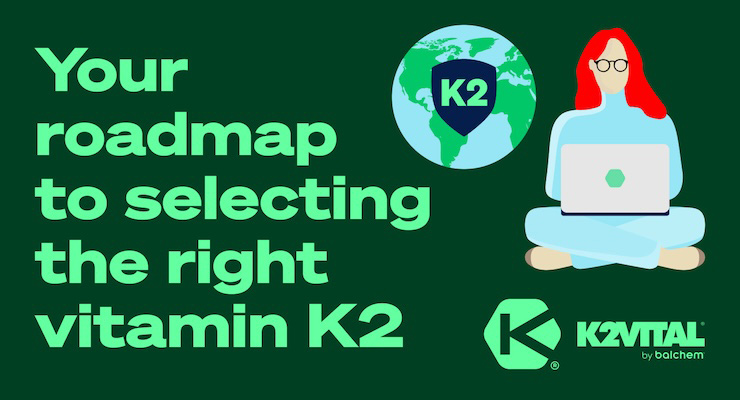Features
Raising the Bar for Children’s Health
With the health of a generation in question, getting young people back on track will require commitment from all fronts.
By: Joseph King

Over the course of the past 30 years, childhood obesity has more than doubled in children (6-11) and tripled in adolescents (aged 12-19), according to the Centers for Disease Control and Prevention (CDC).
The percentage of obese children aged 6-11 years in the U.S. increased from 7% in 1980 to nearly 18% in 2010. Similarly, the percentage of obese adolescents aged 12-19 years increased from 5% to 18% over the same period, according to the CDC.
The American Heart Association (AHA) called childhood obesity “the number one health concern among parents in the United States, topping drug abuse and smoking.” In its publication Understanding Childhood Obesity, the AHA cited a number of physical and mental health problems in children arising from obesity: high blood pressure, type 2 diabetes and elevated blood cholesterol levels; low self-esteem, negative body image and depression.
Further exacerbating the situation, according to the AHA, overweight kids have a 70-80% likelihood of staying overweight their entire lives.
In an effort to stem and reverse this trend, First Lady Michelle Obama, the CDC, and numerous health organizations have launched broad and detailed education campaigns aimed at helping parents understand the serious threat childhood obesity presents.
Those education efforts are proving effective, according to a recent survey, which revealed that mothers, traditionally considered the primary grocery shopper for their families, want food options that are tasty and nutritionally balanced. They survey from MediaPost revealed that mothers more thoroughly scrutinize the content of their child’s lunchbox, with 79% opting for whole grain bread over white and 82% packing fruit for their children.
Evident from the growing consumption of snack foods among children, it’s apparent that convenience is a major factor in selecting food options. According to a USDA survey of nearly 10,000 children, twice as many kids today eat snack foods than 20 years ago. Thus, it should come as no surprise that mothers prefer portion-controlled servings of healthy snacks, with 57% of moms opting for nutritional items that are packed in individual servings.
While a healthy, balanced diet is the goal, it is not always achievable. As a result, the market for dietary supplements, such as omega 3 DHA, vitamin D, probiotics, calcium and fiber, delivered as gummies, gels and smoothies, has grown as parents look for ways to fill nutritional gaps in children’s diets.
“[The market] seems to be growing based on the number of items being launched targeting children and the stream of scientific studies showing product benefits toward this age group,” said Steve Dillingham, general manager of Norway-based GC Rieber Oils, Inc. “There seem to be more products introduced that are positioned at prevention/protection, such as vitamin/mineral products to help maintain the right balance of nutrients for a healthy diet; and supplements intended to block or help alleviate potential childhood health issues, such as omega 3 products to ward off the potential effects of allergies or probiotics to help keep or restore a healthy digestive system.”
As more and more parents come to believe in the connection between nutrition and health, and as healthcare expenditures rise, it makes sense to also give children access to supplementary nutrients during a period of rapid development, according to Sam Wright IV, CEO of The Wright Group, Crowley, LA.
The Wright Group produces custom nutrient blends as well as microencapsulated nutrients under the SuperBlend and SuperCoat brands.
“Chewable vitamins are still the mainstay, but more parents are also opting to provide DHA, which is important in brain development,” Mr. Wright said. “Also, concerns about the safety of vaccines and the growing incidence of allergies are making parents, particularly moms, more aware of nutraceuticals that may help support a healthy immune system.”
Emerging Research
A few new areas to explore include the dietary and micronutrient connections that may exist with autism, attention deficit hyperactivity disorder (ADHD) and allergies, all of which are at epidemic proportions, according to Mr. Wright. “Brain development and immunity will continue to be a major focus as well,” he added.
ADHD affects approximately 2 million American children, and this condition has grown to become the most commonly diagnosed behavioral disorder of childhood, according to the National Alliance on Mental Illness (NAMI). A study based on data extracted from the Wichita, KS-based Riordan Clinic’s patient history database, covering a period of more than 10 years, found that nutritional deficiencies—including deficiencies in fatty acids (EPA, DHA), the amino acid methionine and the trace minerals zinc and selenium—have been shown to influence neuronal function and produce defects in neuronal plasticity, as well as impact behavior in children with ADHD.
Putting all data together, it was demonstrated that after consumption of a combination of fatty acids as well as magnesium and zinc, amino acids, vitamins and probiotics, most subjects had a considerable reduction in markers of metabolic stress and reported less emotional problems.
GC Rieber Oils’ Mr. Dillingham cited a study demonstrating the benefits of omega 3 DHA in children’s diets. The study, published in the American Journal of Clinical Nutrition, stated that “DHA supplementation improved both memory and reaction time in healthy young adults.”
“There have been a string of interesting studies done on omega 3 DHA, relative to the potential positive effects on reading, memory and intelligence,” he said. “Based on studies such as these, we are seeing an increased interest in our high DHA omega 3 concentrates, including our 70 DHA Ultra, from formulators looking for innovative ingredient solutions for use in children’s supplements, based on the growing public awareness and scientific support for DHA benefits in children.”
Another study published in the Journal of Human Nutrition and Dietetics investigated whether the supplementation of soy-derived phosphatidylserine (PS), a naturally occurring phospholipid, improves ADHD symptoms in children. The study concluded that “PS significantly improved ADHD symptoms and short-term auditory memory in children. PS supplementation might be a safe and natural nutritional strategy for improving mental performance in young children suffering from ADHD.”
While a majority of research has focused on the internal health benefits of nutrient supplementation, one study looked at the effect of probiotics, prebiotics, formula or fatty acids in preventing the development of atopic dermatitis (AD) or reducing the severity of AD in newborns to children younger than 3 years.
Published in JAMA Dermatology, the study found that “the best evidence lies with probiotics supplementation in mothers and infants in preventing development and reducing severity of AD. Specifically, Lactobacillus rhamnosus GG was effective in long-term prevention of AD development. Gamma-linolenic acid reduced severity of AD. Supplementation with prebiotics and black currant seed oil (gamma-linolenic acid and omega 3 combination) was effective in reducing the development of AD.”
The study concluded “certain types of nutrient supplementation are beneficial in preventing AD development and reducing its severity. Future research elucidating the mechanisms underlying the actions of nutritional supplementation on AD is necessary.”
Bone development occurs most intensively during childhood. Binding calcium to a healthy bone matrix serves one goal: to maximize bone mineral density in order to maintain bone mass later in life. Without adequate vitamin K, calcium cannot be properly processed in the body to build healthy, strong bones. After peak bone mass is achieved during the mid-to late 20s, loss will accelerate as we age. The probability of developing osteoporosis later in life is closely related to the amount of bone mass built up before the age of 30. Hence, the better bone mass achieved in early life, the less risk for osteoporosis in adulthood.
Unfortunately, many children are vitamin K2 deficient, noted Eric Anderson, global vice president of sales and marketing for NattoPharma, the Norwegian manufacturer of MenaQ7 vitamin K2. “As children mature, it is essential that they are provided adequate nutrition to build healthy bones, tissues and muscles,” he said. “However, vitamin K2 has systematically been eliminated from the Western diet.”
“Vitamin K has become the forgotten vitamin and you don’t see it in a lot of vitamins,” he added. According to NattoPharma, recent research has shown that the majority of children are vitamin K deficient. The average dietary intake of vitamin K has dropped significantly over the last 50 years, and today’s intake seems insufficient for optimal development and maintenance of bones. The consumption of more processed food, fewer vegetables and generally less food that is naturally rich in vitamin K has resulted in sub-optimal intake, according to the company.
Population-based studies and clinical trials have tightly linked better vitamin K status in children (meaning higher levels of vitamin K2 found in blood serum) to the creation of strong and healthy bones. One study, “Pronounced Elevation of Undercarboxylated Osteocalcin in Healthy Children,” published in Pediatric Research showed that improving vitamin K status in children over a two-year period resulted in stronger and denser bones.
Mr. Dillingham said there is still more work that needs to be done on the research front specific to children’s nutraceuticals. “Although there is not a lot of science supporting the benefits of certain supplements specifically for the younger demographic, parents who take supplements themselves for various reasons are more likely to consider supplements for their children as a natural alternative to prescription alternatives,” he noted. “More clinical studies on supplements for children is needed and will help increase the attention and acceptance of nutraceuticals with pediatricians and parents alike.”
Mr. Wright concurred, adding, “Personal recommendations of friends who are trusted may be more powerful than doctors’ advice for some consumers. This being said, the industry has to do a better job of bringing credible scientific information about the benefits of nutraceuticals to the medical community. Fortunately, it seems to be evolving in a positive direction as the science becomes more compelling.”
Gaining Acceptance
Doctors are powerful influencers on parent behavior and their opinions about nutraceuticals carry great value. How a pediatrician feels about supplementation of the diet is a function of age and level of training in this area, noted Mr. Wright.
“More education is needed in order for doctors to become more comfortable in recommending supplements, but quite honestly, there are so many sources of information nowadays that are actually more persuasive than primary care physicians,” he added. “A major source of information is TV doctors who are almost universally supportive of nutraceuticals.”
Indeed, advertising and advertorials are powerful influencers of children. A study published in the April issue of the American Journal of Preventive Medicine, attempted to quantify the portion of food and beverage television advertisements viewed by children covered by the current Children’s Food and Beverage Advertising Initiative (CFBAI). Food and beverage companies have pledged to reduce unhealthy marketing to children through the CFBAI. However, public health experts question the initiative’s effectiveness because pledges only apply to some types of marketing. For instance, the CFBAI only covers TV advertising that is “child-directed,” defined as advertising during programs for which children make up 35% or more of the viewing audience.
According to the study, only 45-48% of food advertisements viewed by children met current CFBAI definitions of child-directed advertising. Ensuring that nutrition standards apply to the majority of food advertisements viewed by children requires broader definitions of child-directed advertising, the study concluded.
In response to the study, Pamela Bailey, president and CEO of the Grocery Manufacturers Association (GMA) Washington, D.C., said in a press release, “America’s food and beverage companies share First Lady Michelle Obama’s goal of solving obesity within a generation, and are committed to providing consumers with the products, tools and information they need to achieve and maintain a healthy diet. This includes an unwavering commitment to responsible marketing practices. In July 2011, CFBAI members adopted rigorous nutrition criteria so that all products marketed by CFBAI participants on children’s programs meet strict standards for calorie, sugar, fat and sodium content.”
A Look Ahead
“Back in the agrarian age, families were huge since kids represented cheap labor on the family farm,” noted the Wright Group’s Mr. Wright. “Because of infectious disease and dangerous working conditions, parents also expected to lose a kid or two along the way. Today, there is nothing too good for our kids. If we could put them all in a protective bubble, we would.”
As two-income households became the new normal, nutrition became a growing concern. In fact, the family dinner hour has become a relic of an earlier time, and in many cases fast food has taken its place. These megatrends may continue for the foreseeable future, and that bodes well for children’s nutraceuticals, according to Mr. Wright.
Vladimir Badmaev, head of research and development for NattoPharma, warned that as with any supplement recommended and/or given to children, parents should exercise common sense and sound justification in such a regimen. “In many cases kids are given multiple supplements (e.g., gingko for better performance at school is a common practice in Japan), all with good intentions to benefit children’s health. Also, and unfortunately, the supplements given to young children may teach them a ‘pill solution’ instead of ‘effort solution’ in life.”
“However, good nutrition and a healthy, active lifestyle should always be considered a first line of response,” he concluded.
Joseph King is a communications and brand marketing executive with 13 years of media/public relations experience. He can be reached at jsalking@yahoo.com.
|
Nearly one in three American children and adolescents today are overweight or obese; 80% of adolescents have poor diets. U.S. Agriculture Secretary Tom Vilsack recently outlined the need for a generational commitment to improve childhood nutrition, which will lead to a healthier generation of Americans. While health and nutrition are complex topics, Mr. Vilsack noted USDA has made significant efforts to focus on improving consumers’ access to information while helping consumers gain better access to food, which together will ensure progress as the nation battles both childhood obesity and malnutrition. “We must continue to take action to ensure that today’s young people grow up healthy and strong, or we will see more challenges—everything from soaring healthcare costs to diminished national security and decreased business competitiveness,” said Mr. Vilsack. “Improving the nutrition of our young people has tremendous implications for our country’s future.” Nearly one in three American children and adolescents today are overweight or obese. Some of those children come from low-income families, where access to healthy food choices and opportunities for physical activity can be limited. Nearly a third of young people in the U.S. are at risk for preventable diseases like type 2 diabetes and heart disease. Mr. Vilsack said that USDA empowers consumers to make healthier food choices by providing science-based information, advice and resources like USDA’s MyPlate symbol and USDA SuperTracker. Mr. Vilsack also noted that USDA continues working with First Lady Michelle Obama on the Let’s Move! initiative, which is helping to promote healthy eating and physical activity while empowering citizens to combat childhood obesity. The initiative comes at a time when new research published in the American Heart Association’s journal Circulation indicates more than 80% of adolescents in the U.S. have poor diets. For this study, researchers examined the components of cardiovascular health in 4,673 participants aged 12 to 19 years (representing about 33.2 million U.S. adolescents) from the 2005-2010 National Health and Nutrition Examination Surveys. Overall, low prevalence of ideal cardiovascular health behaviors in U.S. adolescents, particularly physical activity and dietary intake, will likely contribute to a worsening prevalence of obesity, hypertension, hypercholesterolemia and dysglycemia as the current U.S. adolescent population reaches adulthood, researchers concluded. Population-wide emphasis on establishment of ideal cardiovascular health behaviors early in life is essential for maintenance of ideal cardiovascular health throughout the lifespan. The American Heart Association recently developed definitions and metrics for monitoring the spectrum of cardiovascular health in adolescents and children. Prevalence of individual cardiovascular health behaviors and factors was estimated according to American Heart Association criteria for poor, intermediate and ideal levels. Ideal blood pressure was most prevalent (males, 78%; females, 90%), whereas a dramatically low prevalence of ideal Healthy Diet Score was observed (males, <1%; females, <1%). Females exhibited a lower prevalence of ideal total cholesterol (65% versus 72%, respectively) and ideal physical activity levels (44% versus 67%, respectively) yet a higher prevalence of ideal blood glucose (89% versus 74%, respectively) compared with males. Approximately two thirds of adolescents exhibited ideal body mass index (males, 66%; females, 67%) and ideal smoking status (males, 66%; females, 70%). Less than 50% of adolescents exhibited ≥5 ideal cardiovascular health components (45%, males; 50%, females). Prevalence estimates according to sex were consistent across race/ethnic groups. |
|
Recent launches designed specifically with children in mind. Greek yogurt has exploded as a low-fat source of protein. Yoplait from General Mills recently introduced its new Pro-Force Greek yogurt for the tweens market. The yogurt contains two times the protein of the leading kids’ yogurt, according to the company, and is available in Strawberry Blast and Mixed Berry Burst flavors. “Yoplait Pro-Force yogurt was inspired by our Greek line of yogurts,” said Ashley Karr, Yoplait Kids associate marketing manager. “In looking at the protein benefits of Greek yogurt for adults, we naturally considered this a terrific product that would provide higher protein for active tweens. However, tweens really don’t think Greek yogurt tastes good, so we created a product that is colorful, creamy and flavorful, while delivering the nutritional benefits of Greek yogurt.” The company said Yoplait Pro-Force contains no artificial colors, flavors or sweeteners and contains 9 grams of protein per 3.5 oz. serving. Chobani introduced Chobani Champions Greek Yogurt made just for kids. Made with low-fat milk and available in Honey-Nana, VerryBerry, Orange Vanilla and Vanilla Chocolate Chunk flavors, Chobani said the yogurt contains 20% of the daily value for vitamin D in a 3.5 oz. pre-portion cup. Sugars found in Champions products come from milk (lactose), real fruit (fructose) and evaporated cane juice (which is less processed than white table sugar and is used to sweeten the fruit, vanilla and chocolate chunk preps blended into Greek yogurt products), according to the company. In March, USANA Health Sciences unveiled USANA’s BiOmega Jr. children’s nutritional supplement. According to the company, each packet of BiOmega Jr. contains essential fatty acids EPA and DHA plus vitamin D. Research shows these particular supplements are important for a child’s growing brain and body. For example, omega 3s are recognized for supporting healthy eye development and visual acuity. A 2009 study published in the Journal of Nutrition estimated that nearly 90% of children consume less than the daily 351 mg of EPA/DHA recommended by the Academy of Nutrition and Dietetics and the Dietitians of Canada. Post Foods LLC launched Post Sesame Street Cereal, a whole grain oat-based cereal for children. Post Sesame Street Cereal is available in two naturally flavored varieties: Apple and Banana. This oat-based cereal provides two-thirds of a toddler’s daily whole grains and contains nutrients to help support healthy brain development. Both varieties have 1 gram of sugar per serving and contain no artificial flavors. “As a doctor who is also a mom to two young children, I’m thrilled to find a product that is a healthy option for my kids and was created with their specific nutritional and functional needs in mind,” said Dr. Roshini Raj, consulting physician for Post Sesame Street Cereal. “The whole grain content and fortification of nutrients like choline, iron and zinc are essential to a growing toddler’s diet.” The “X” and “O” shapes in each box are specifically designed for little fingers to easily grasp and are formulated to melt in a toddler’s mouth quickly for safe and easy consumption, according to a company news release. Greenways Foods & Beverages Pvt Ltd. also launched its fruit-energy drink, Notty, for children in the Indian market. According to the company, Notty is a healthy fruit energy drink, both nutritious and tasteful. It contains vegetarian DHA and vitamins A, C and E, and does not contain any synthetic ingredients or stimulants in its formulation. It is a rich source of dietary fiber and vitamins; it is available in Strawberry and Mango flavors. |
|
Practice intended to acclimate children to eating veggies. Maybe Mary Poppins was on to something when she famously said, “a teaspoon of sugar makes the medicine go down.” In this case, however, it’s a light mist of sugar that could make the vegetables go down. Making vegetables more palatable for children was the topic of research presented at the annual meeting of the American Association for the Advancement of Science in February. Preliminary studies indicated that “preschoolers who were served lightly sweetened vegetables (sprayed with a mist of sugar) at lunchtime ate more of the healthy foods compared to those who were served unsweetened vegetables.” Researchers investigated other methods to cover the vegetables’ bitterness, including various salts, but, not surprisingly, plain sugar worked the best. Researchers stressed that the sweetened vegetables should not be treated as a life-long solution but more to help parents get their children accustomed to eating their veggies. If you are worried about the extra calories, don’t be. Sweetening vegetables with about a half a teaspoon of sugar only adds 8 calories to three-fourths of a cup of vegetables. |




















